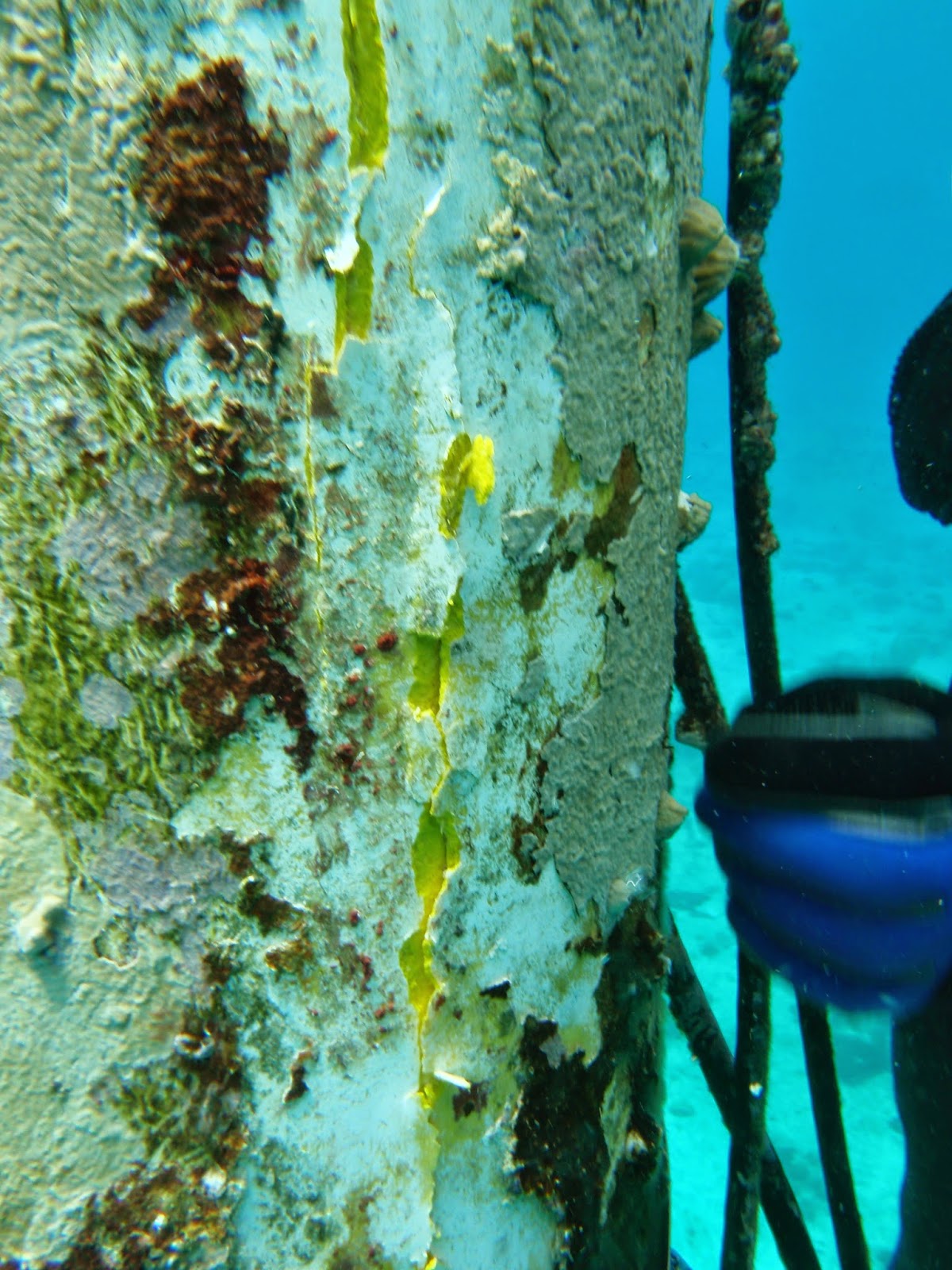[Note: this is a back-dated blog entry, posted in September 2014, to document the events of the station swap-out that led to a moratorium on climbing this station.]
In the week of May 26th - 30th, AOMLers Ian Enochs and Mike Jankulak traveled to St. Croix, USVI, with C-ARMS contractor Jon Fajans for work at the CREWS station near Salt River Bay on the north coast of the island. There were four goals: swap out all instruments on the station, install a new cellular modem to improve station communications, deploy a number of NCRMP (National Coral Reef Monitoring Program) experiments, and train Jon Fajans as a fully-redundant backup for Mike Jankulak's station-climbing activities.
These activities were interrupted by the unexpected and catastrophic failure of a RDI/Teledyne CTD within 24 hours of its deployment. The CTD is believed to have exploded due to an internal buildup of gasses from its batteries, although the exact cause of the malfunction is not yet understood. This explosion was witnessed by the team Wednesday morning and the resulting structural damage to the fiberglass pylon was documented in photos. A decision was made to cut short all work on the station until the structure could be reevaluated for its fitness to climb, leaving the station with a mixture of instruments (four new, four old, three missing) and with key elements of the training exercise incomplete. Although the station was left on Wednesday in a functional state, two days later it ran out of power because its solar panels were not correctly charging its batteries.
On the plus side, the NCRMP activities led by Ian Enochs resulted in the successfully deployment of three autonomous reef monitoring structures (ARMS), five calcification accretion units (CAUs) and five bioerosion monitoring units (BMUs). On the CREWS side, the team was able to recover six months of station data that had not been expected to exist, following the station's apparent loss of power and cessation of communications in December of 2013, which considerably extends the data coverage at this site.
Three photos of the CTD and station, post-explosion, follow (photo credit: Ian Enochs). Clicking on any of these photos will load the original, larger version of the image file.
(signed) Mike Jankulak


